Rome's Best Travel Seasons: When Is the Best Time to Visit?
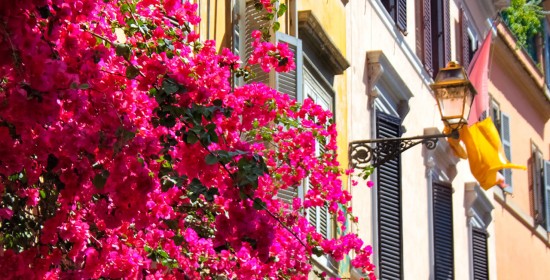
Buongiorno and welcome to Stefano Rome Tours, Rome’s premier tour company for private tours of Rome and Rome Shore Excursions from Civitavecchia and long-distance transfers in Italy since 2005. Rome, the Eternal City, beckons travelers year-round with its timeless charm, rich history, and delectable cuisine. But what is Rome's best travel season, and when is the best time to visit?
The answer to this question is as diverse as the city itself, offering something special for every season. In this blog, we embark on a journey through the seasons of Rome, where each one unveils its own unique allure and character.
We'll explore the pros and cons of visiting Rome during spring, summer, autumn, and winter, helping you decide when to plan your Roman holiday. Whether you're drawn to the blossoming flowers of spring, the warm embrace of summer, the vibrant colors of autumn, or the serene beauty of winter, Rome welcomes you with open arms, offering a year-round spectacle that will leave an indelible mark on your heart.
So, let's embark on this seasonal adventure and uncover the best time for you to experience the Eternal City in all its glory.
Rome's Best Travel Seasons:
When Is the Best Time to Visit Italy?
Spring in Rome (March to May)
Spring in Rome is a season of renewal and celebration, where the pleasant weather, blooming flora, fewer crowds, and a rich tapestry of cultural events create a perfect backdrop for a memorable and immersive travel experience in the Eternal City. It's a time when Rome truly lives up to its reputation as a city of romance and history.
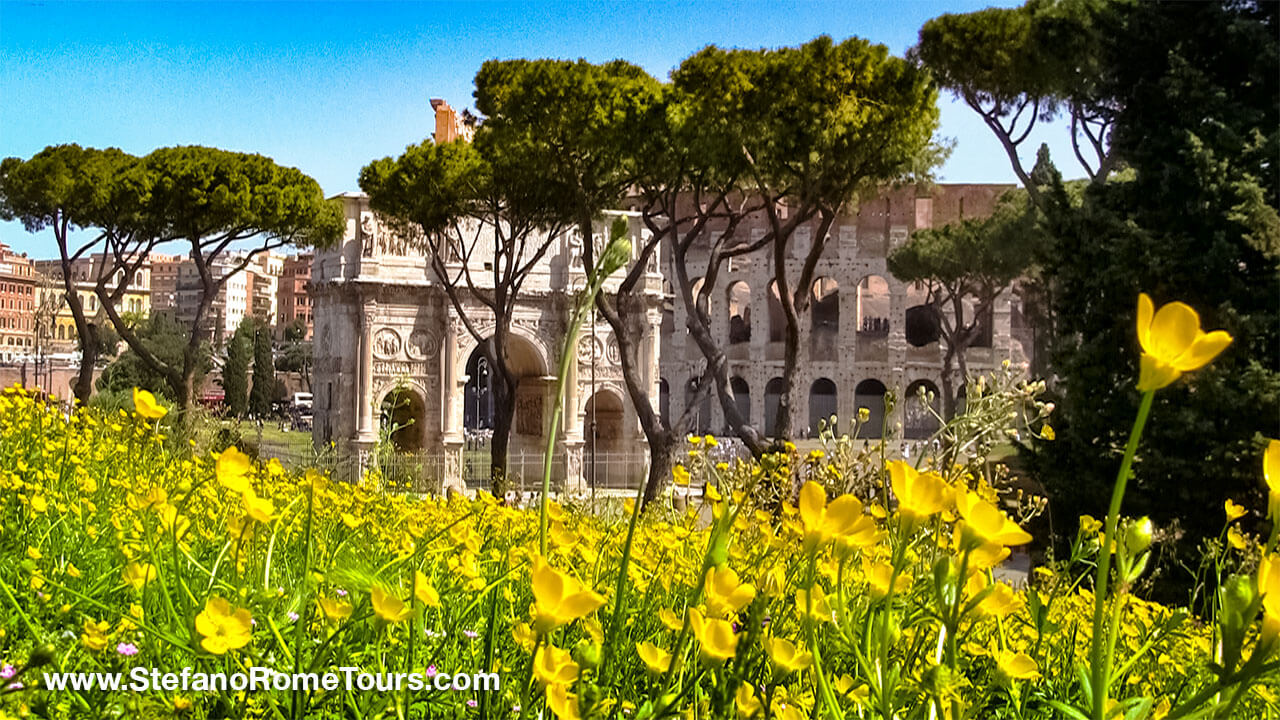
-
Pros of traveling to Rome in Spring
Spring in Rome - Pleasant Weather
Spring in Rome is a time of delightful weather. The temperatures start to climb from the chill of winter, but they remain mild and comfortable, making it perfect for outdoor exploration.
Daytime temperatures typically range from 15°C to 20°C (59°F to 68°F), and evenings are cool but not cold. This means you can comfortably wander through Rome's historic streets, visit outdoor landmarks, and enjoy meals at charming sidewalk cafes without the discomfort of extreme heat or cold.
It’s important to note that early spring (especially March to early April) has the most unpredictable weather with the possibility of rainfall and intermittent showers. Plan to travel with an umbrella and rain gear, and follow the weather forecast before your trip to Italy.
Spring Blossoming Flowers and Lush Greenery
As nature awakens from its winter slumber, Rome transforms into a breathtaking display of color with blooming flowers and lush greenery. Spring brings a remarkable vibrancy to the city, and you'll find yourself immersed in a natural tapestry of stunning hues. Some notable highlights include:
Spanish Steps and Azaleas:
The iconic Spanish Steps, known for their historic charm, become even more enchanting in spring. The grand staircase is adorned with cascading azalea plants in full bloom, creating a mesmerizing sea of pink and fuchsia. This visual spectacle is a testament to the city's dedication to floral beauty.
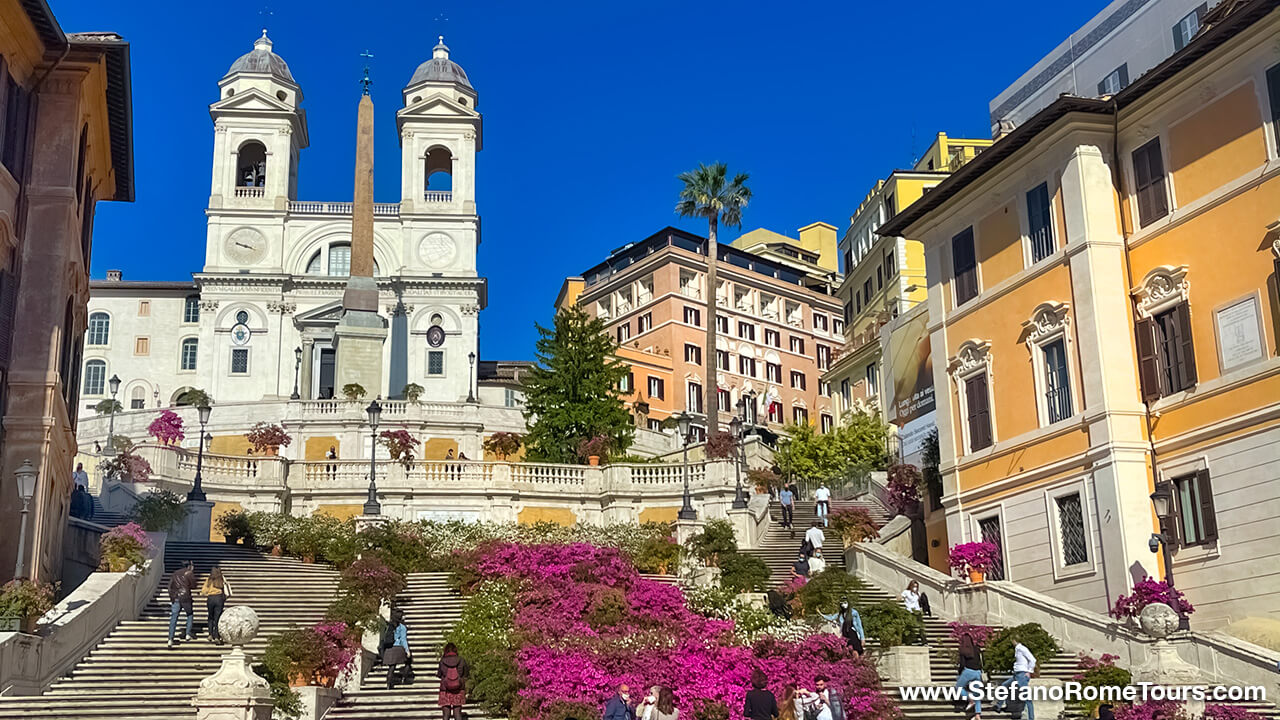
Cherry Blossoms in EUR:
Beyond the more commonly known flower displays, spring in Rome unveils a unique and captivating sight – the cherry blossoms in EUR. The district of EUR, originally planned for the 1942 World's Fair, boasts an array of wide boulevards and green spaces. During spring, the area is graced with elegant cherry blossoms that create a delightful contrast against the district's modernist architecture. The delicate pink and white petals falling like confetti add a sense of serenity and beauty to EUR's urban landscape.
The Rose Garden (Roseto Comunale)
The Rose Garden, perched on the Aventine Hill, is a hidden gem in Rome that truly comes alive in spring. This enchanting garden features over 1,000 varieties of roses from all over the world. Visitors are treated to a mesmerizing display of colors and scents as they stroll through this fragrant paradise.
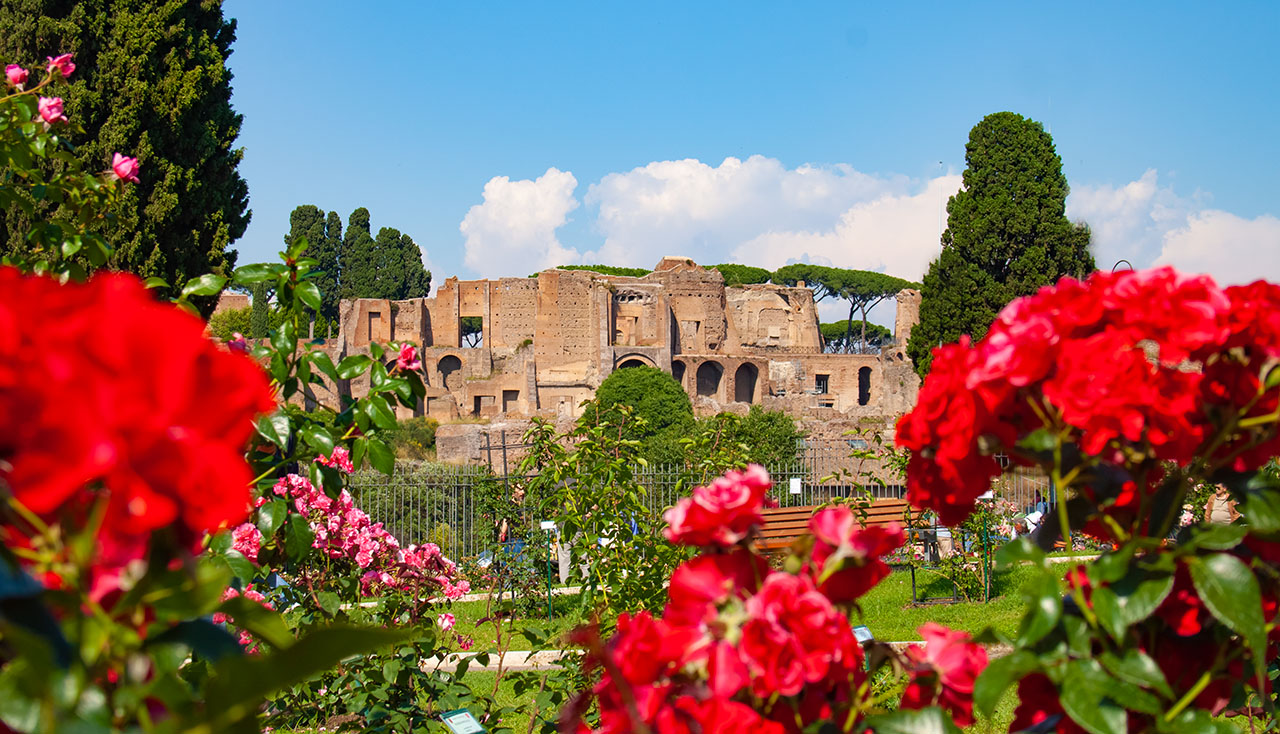
Fewer Crowds in Spring (Especially March to Early April)
Early spring in Rome is indeed a well-kept secret among savvy travelers, offering a unique window of opportunity to enjoy the city with fewer crowds and a more intimate experience. This period marks the tail end of winter and the beginning of spring, and many tourists have not yet arrived in large numbers. However, it's important to note that Rome's popularity begins to surge as the season progresses, especially after Easter and in late April onwards.
Travelers who visit Rome during this time are rewarded with the opportunity to explore iconic attractions like the Colosseum, the Vatican, and the Roman Forum without the typical summer hustle and bustle. This provides a more intimate and immersive experience, allowing for a deeper connection with the city's historical and cultural treasures.
Spring Traveler Influx (Late April Onwards)
As the calendar progresses and Easter approaches, Rome sees a significant increase in the number of visitors. This trend continues throughout late April and into May. Many travelers and cruisers alike choose this time for their spring getaway, as they aim to coincide their trips with milder weather. In addition, early May marks the start of the busy cruise season, with cruisers on shore excursions from Civitavecchia including Rome in their itineraries.
The influx of spring travelers and cruisers significantly elevates the number of tourists in the city. Popular attractions, particularly the Vatican Museums, the Colosseum, and the Spanish Steps, experience heightened crowds. It's important to be aware that while the earlier part of spring offers a more serene experience, late spring may see longer lines, wait times, and a more vibrant atmosphere.
Spring Events and Festivals in Rome
Easter in Rome
Easter is one of the most significant religious and cultural events in Rome. The city's vibrant Easter celebrations often draw pilgrims and tourists from around the world. The Pope leads a series of religious events, including the Via Crucis (Way of the Cross) procession at the Colosseum on Good Friday and Easter Sunday Mass in St. Peter's Square.
Rome's Birthday Historical Parade (Natale di Roma)
April 21st marks the legendary founding date of Rome, and the city celebrates its birthday in style with the Natale di Roma festival. This event includes a grand historical parade featuring costumed participants reenacting Rome's history from its legendary origins through the ages. You'll see legionnaires, gladiators, and characters from different historical periods providing a captivating glimpse into Rome's past.
The historical parade begins in Circus Maximus around Piazza Venezia, along Via dei Fori Imperiali, then around the Colosseum and back to Circus Maximus where more historical events take place to celebrate the birth of Rome.
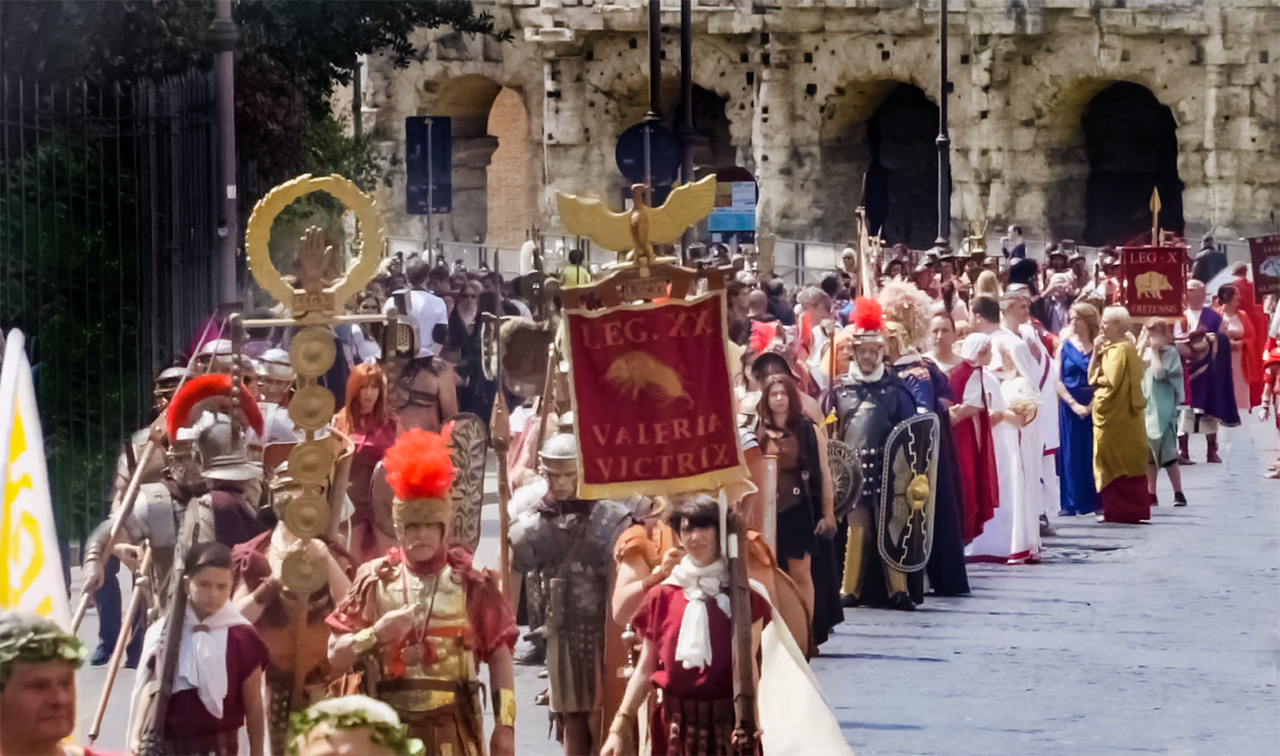
Day Trips from Rome in Spring:
Spring in Rome is not only a time of beauty and rebirth within the city itself but also a gateway to explore the enchanting destinations that surround the Eternal City. Here are a few captivating day trips that allow you to make the most of this delightful season:
Tuscany Tours from Rome: As spring unfolds, Tuscany becomes a picturesque haven with its rolling hills and vineyards adorned in luminescent green. Day trips from Rome to Tuscany, including towns like Montepulciano and Pienza, Cortona and Arezzo, offer an immersive experience in the heart of this stunning region. Sip on renowned wines like Vino Nobile di Montepulciano and Brunello di Montalcino, savor local cuisine, and meander through charming streets that seem to have stood still in time.
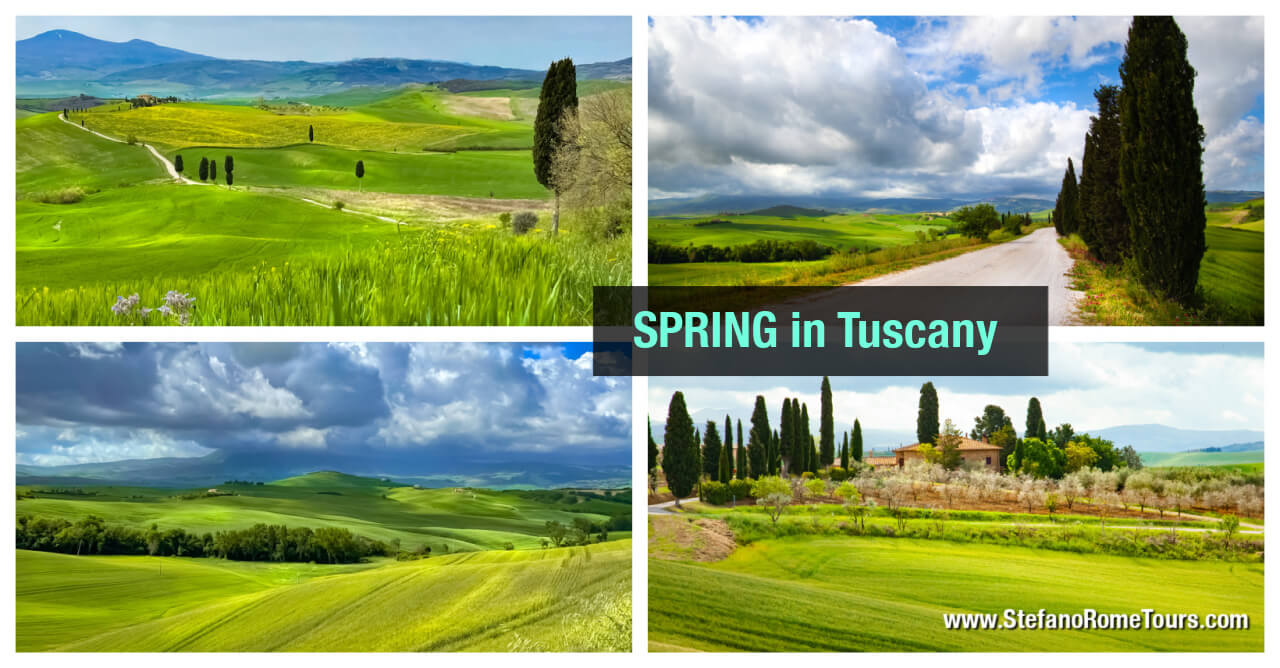
Rome Countryside Tours: Just a short drive from Rome, the Roman Countryside is a tranquil escape, particularly in the spring. Explore the Tivoli Villas from Rome, including the renowned Villa d'Este with its enchanting gardens and fountains. Alternatively, venture to the Medieval towns and castles that dot the countryside. Bracciano Castle, overlooking Lake Bracciano, offers a glimpse into the history and charm of the region.
Day trips from Rome to Pompeii and the Amalfi Coast: Before the summer travelers descend upon the Amalfi Coast, the spring season offers an ideal window to explore this captivating region. The landscapes are lush, and the mild weather allows you to enjoy coastal walks and panoramic vistas without the scorching summer heat.
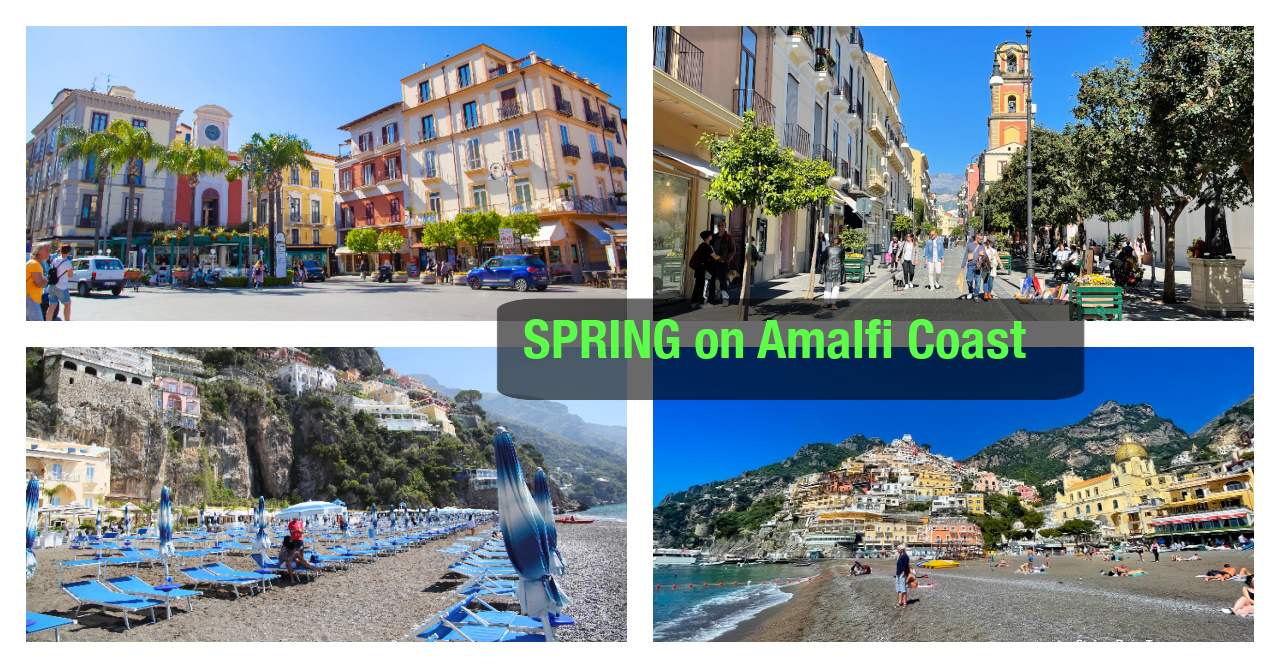
These spring day trips from Rome allow you to bask in the beauty of the season and explore diverse landscapes and cultures, making your Roman holiday even more memorable and enriching.
-
Cons for traveling to Rome in Spring:
While spring in Rome offers numerous advantages, it's important to be aware of a couple of potential drawbacks to ensure your trip is as enjoyable as possible.
Unpredictable Spring Showers
Although spring in Rome is known for its pleasant weather, it can be somewhat unpredictable when it comes to rainfall. Occasional rain showers are not uncommon during this season. While these showers are typically brief and do little to dampen your experience, it's a good idea to pack an umbrella or a lightweight rain jacket just in case. This way, you can stay prepared and continue exploring the city even if the weather takes an unexpected turn. It's a small inconvenience that can go a long way in ensuring your comfort during your visit.
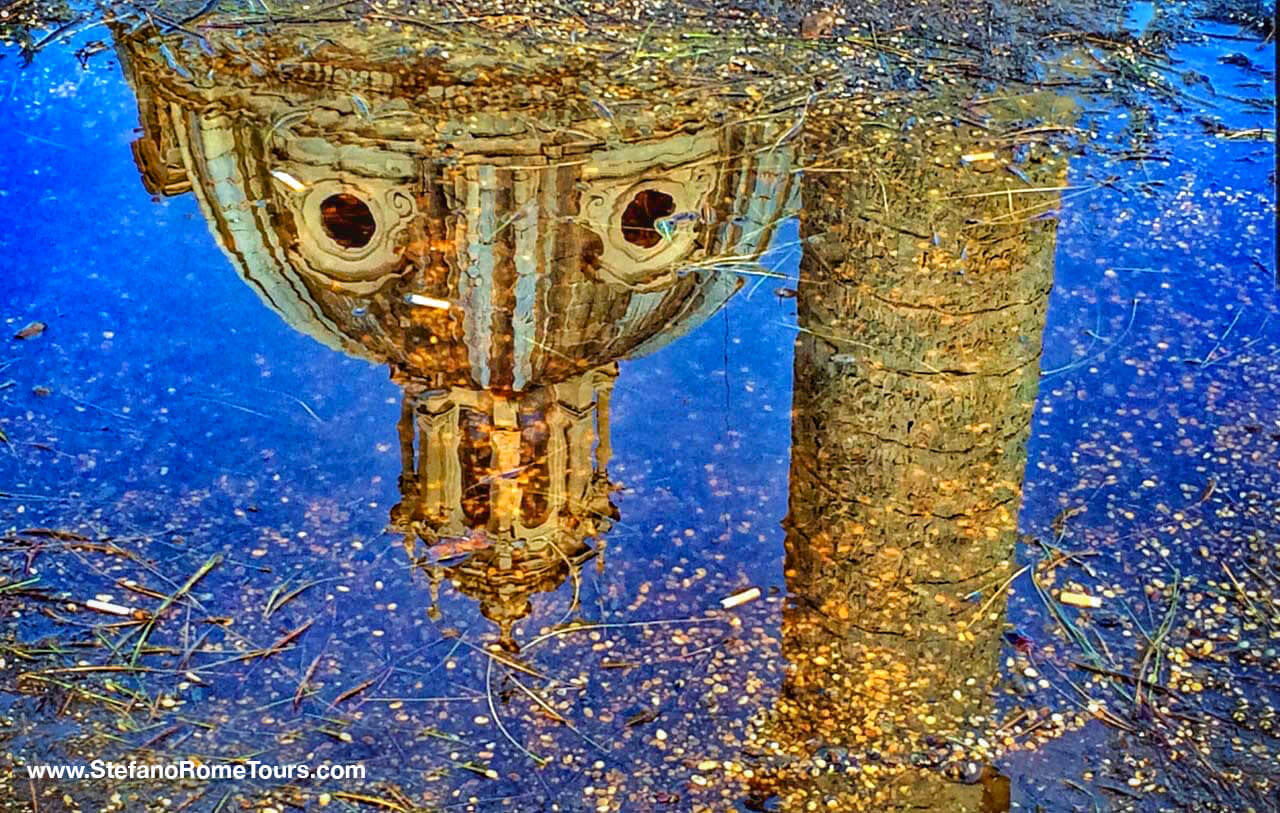
Mid-High Prices mid-late Spring
As mid-late spring ushers in an influx of travelers who want to enjoy the delightful weather and vibrant culture of Rome, you may encounter mid-high prices for accommodations and flights in mid-late spring. The increased demand for lodging often results in higher hotel rates, and flights to Rome may also come with a steeper price tag.
If you're traveling on a budget, it's essential to plan to visit in early spring (March through early April) and book well in advance to secure more reasonable rates.
Tips for Late Spring Travel:
If you plan to visit Rome in late spring, especially after Easter and in late April, consider booking tickets for popular attractions as far in advance as possible. This can help you skip the lines, secure elusive tickets, and make the most of your visit.
Prioritize early morning or late afternoon visits to popular landmarks to avoid the midday rush.
Be prepared for varying crowd levels, and remember that while late spring is busier, it's still possible to explore the city's wonders with some strategic planning and patience.
By keeping these potential drawbacks in mind and making the necessary preparations, you can make the most of your springtime adventure in Rome, ensuring a memorable and enjoyable visit despite any intermittent showers or pricing fluctuations.
Summer in Rome (June to August)
Summer in Rome offers a mix of advantages and disadvantages. It's an ideal time for those who enjoy warm, sunny weather, long days, and vibrant outdoor events. However, travelers should be prepared for large crowds at major attractions and the possibility of oppressive heat. To make the most of your summer visit to Rome, consider booking tickets for popular attractions in advance, staying hydrated, and taking breaks in the shade to beat the heat.
-
Pros of Summer Travel to Rome:
Summer Warm and Sunny Weather:
Summer in Rome means sunshine and warmth and long days. The weather is perfect for outdoor activities and enjoying the city's many alfresco dining options. You can start your day with a cappuccino at a sidewalk café, savor a leisurely lunch in a piazza, and dine under the stars in the evening. The Mediterranean climate ensures that you can make the most of your time outdoors.
Summer Extended Daylight:
Summer provides travelers with longer daylight hours, which means more time to explore Rome's rich historical and cultural offerings. The sunsets during this season can be especially enchanting, casting a warm glow on the city's historic buildings and fountains. It's a fantastic time to visit iconic landmarks like the Colosseum, Roman Forum, and the Pantheon, and still have ample daylight to discover the city's hidden gems.
Summer Festivals and Events in Rome:
Summer in Rome is far from dull. The city comes alive with festivals such as the summer festival along the Tiber River, open-air cinema screenings, and lively street performances. You might stumble upon music festivals, dance performances, or even neighborhood celebrations where you can witness traditional Italian festivities. These events add an extra layer of excitement and cultural enrichment to your visit.
-
Cons of visiting Rome in the summer:
Rome Crowds and Summer Heat:
One of the significant drawbacks of visiting Rome during the summer is the oppressive crowds and heat. June through August, in particular, can be quite crowded at popular attractions, which can lead to longer wait times and a less enjoyable experience.
Additionally, the summer heat can be intense, with daytime temperatures regularly exceeding 33°C (90°F), and sometimes even reaching 40°C (100 °F). For some travelers, the scorching heat and throngs of tourists can be overwhelming and uncomfortable.
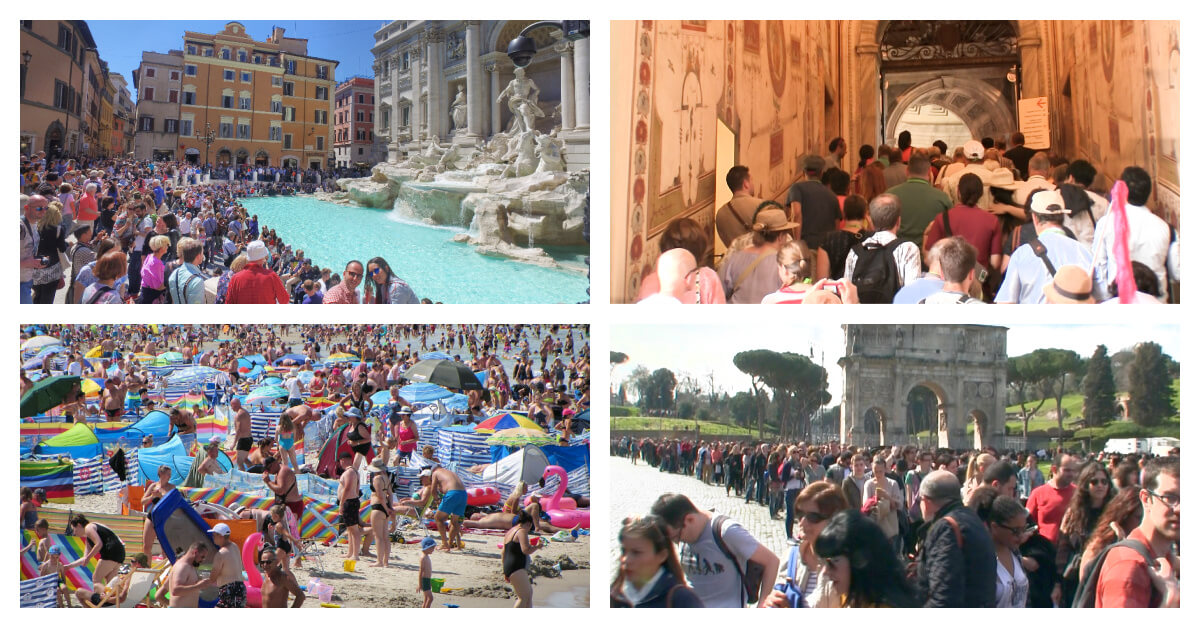
Summer Soaring Travel Prices
The high demand during the summer season often leads to increased prices for accommodations, flights, and activities like tours and transportation. Many hotels and tour providers in tourist-heavy areas raise their prices during this peak period. It's essential to plan and book in advance to secure affordable options and avoid last-minute surprises.
SOLD-OUT Admission Tickets to Top Tourist Attractions in the Summer
One of the challenges of visiting Rome during the summer is the high demand for admission tickets to major tourist attractions, such as the Colosseum and Vatican Museums. With larger crowds and many tourists vying for entry, it's not uncommon for these attractions to sell out well in advance. This can be a significant disappointment, as it might force you to miss out on some of Rome's most iconic and historically significant sites.
SOLD-OUT Hotels, Tours, and Transfers in the Summer
The popularity of Rome during the summer months often leads to fully booked hotels, sold-out tours, and booked-out transfer services. You might find that your preferred accommodations are fully occupied, limiting your choices. Additionally, organized tours and transportation services can become fully booked, leaving you with limited options for guided experiences or convenient transfers. To avoid this, it's best to make reservations for accommodations and tours well in advance of your trip.
Autumn in Rome (September to November)
Autumn is a delightful time to experience the city's rich culture, delectable cuisine, and historic treasures while enjoying milder weather and fewer crowds. Whether you're a food enthusiast, an art lover, or simply seeking a peaceful Roman adventure, this season offers many rewards for travelers.
It's worth noting that early-mid fall (September to October) in Rome can be relatively busy with travelers, especially cruisers disembarking at the nearby port of Civitavecchia. Cruise passengers often include Rome in their itineraries, contributing to an influx of visitors during this period. While the crowds tend to decrease as the season progresses, planning and reservations are still recommended for a more enjoyable and hassle-free visit during the early fall.
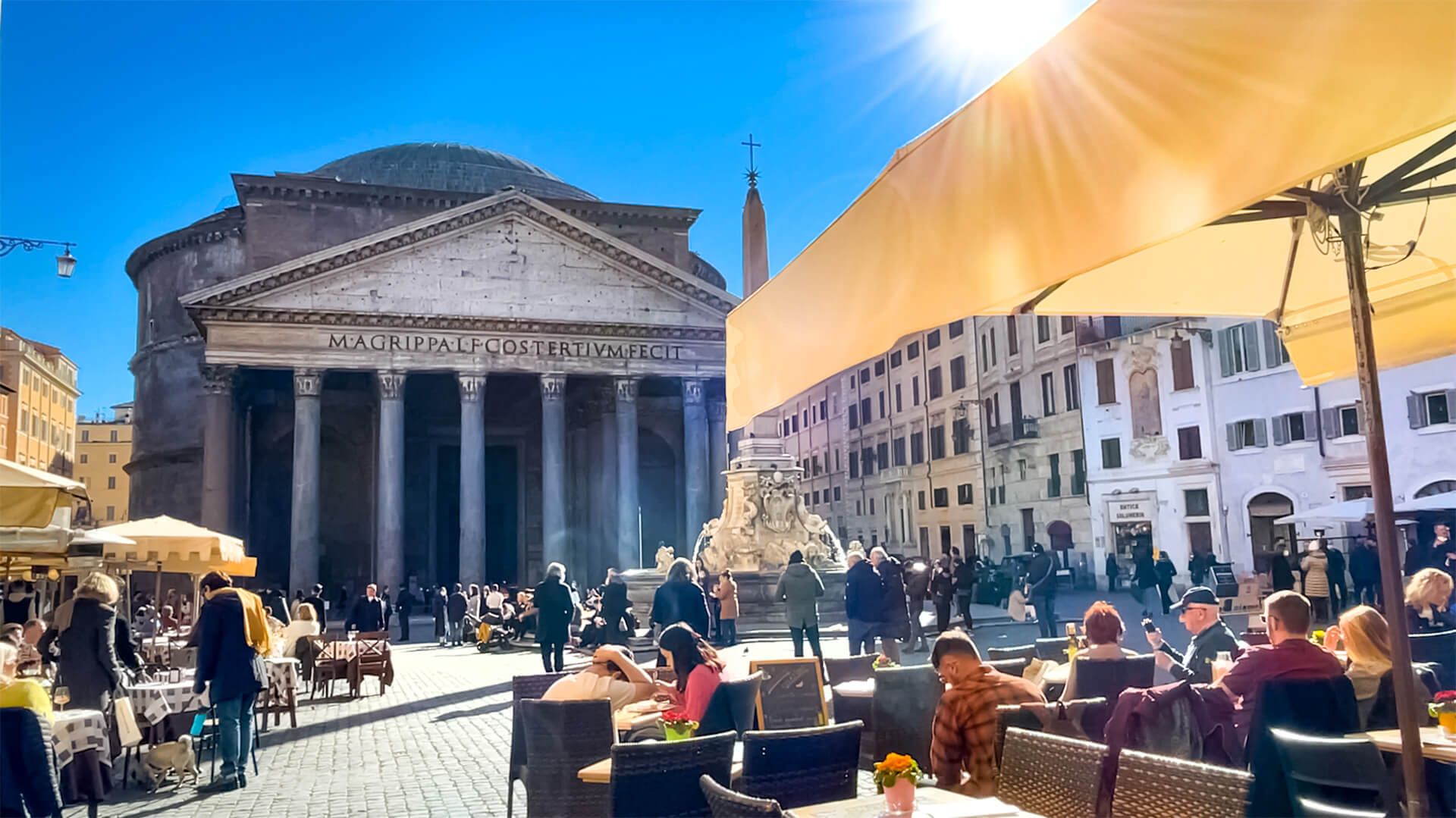
-
PROS of traveling to Rome in the Autumn / Fall
Rome’s Mild Fall Weather:
Autumn in Rome offers a welcome transition from the scorching summer heat. The temperatures gradually become more moderate and comfortable for outdoor exploration. Daytime highs typically range from 20°C to 25°C (68°F to 77°F), providing a pleasant climate for strolling through the city, visiting historical sites, and enjoying open-air dining. The crisp air and golden sunlight enhance the experience of exploring Rome's iconic streets and squares.
Fewer Crowds in Autumn in Rome - with a note on timing
Early fall, which encompasses September through October, is a period when Rome remains bustling with fall travelers and cruisers. Many tourists choose to explore Rome during this time to enjoy milder weather and the beauty of the season. The city sees a continuous influx of visitors, particularly those arriving via cruise ships in nearby Civitavecchia, making it a relatively busy time for tourism. As a result, popular attractions may still experience considerable crowds, and some sites and tours could be in high demand.
Harvest Season for a fall feast:
Autumn is the season of abundance in Rome, with local markets and restaurants brimming with the best of Italy's seasonal offerings. The fall harvest brings an array of delicious seasonal foods and wines. You can sample freshly picked figs, grapes, and olives, and savor seasonal dishes like wild mushroom risotto and roasted chestnuts. This is a time when Rome's gastronomy truly shines, offering a feast for your taste buds.
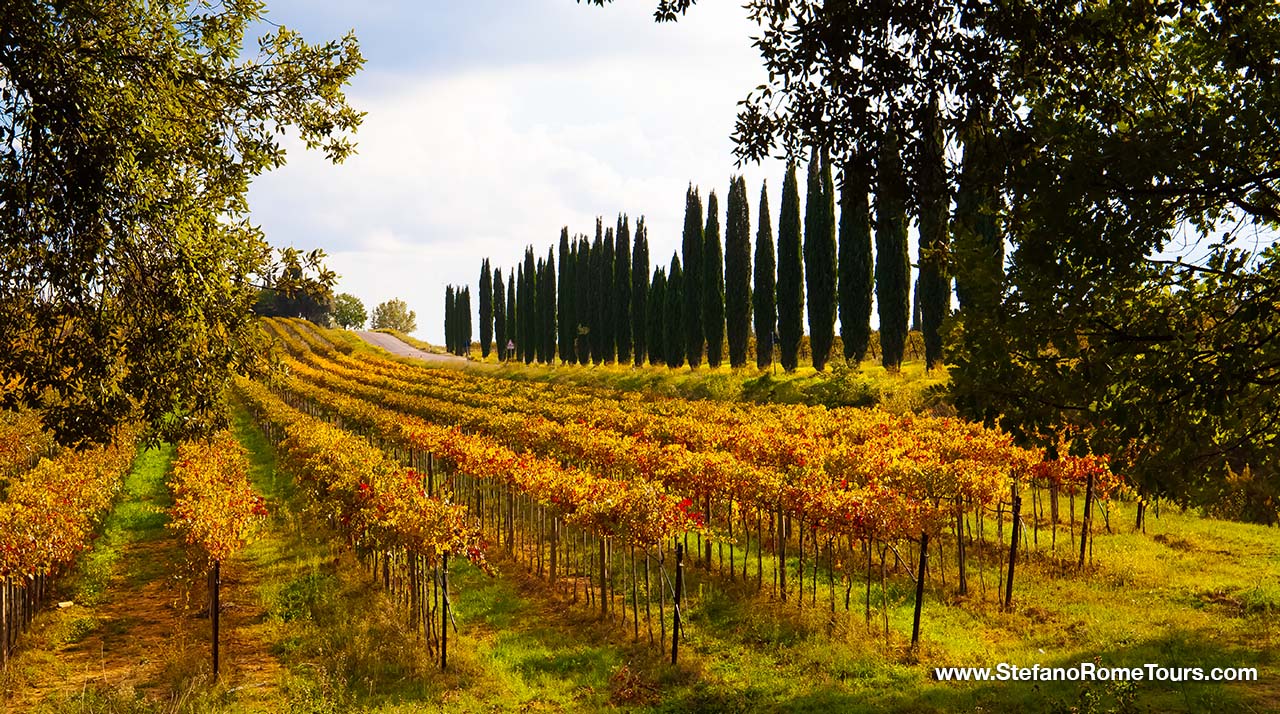
Late Autumn - Crowds Begin to Lessen:
After early November with the last of the big cruise ships gone, Rome starts to see a decrease in crowds. As the autumn season deepens, the number of tourists visiting the city begins to lessen, allowing for a more peaceful and leisurely experience. This transition typically continues through the winter months, with the fewest crowds being experienced during this period.
Traveling to Rome during late autumn, from mid-November onward, can be particularly rewarding for those seeking a more tranquil visit. With a decrease in tourist numbers, you'll have more room to explore and enjoy Rome's major attractions, including iconic sites such as the Trevi Fountain, the Roman Forum, and the Sistine Chapel. This less crowded atmosphere allows for a more relaxed and immersive exploration of the city, providing an opportunity to savor the art, history, and culture of Rome at your own pace.
Wine Tours from Rome to Tuscany or Umbria during Wine Harvest Season:
As the golden hues of autumn sweep across the Italian countryside, Rome offers the perfect launchpad for an unforgettable wine harvest season experience. This season is a true feast for the senses, and you can embark on wine tours from Rome to Tuscany and Umbria.
Here's a delightful day trip idea to savor the best of Tuscany and Umbria in the fall if you are staying in Rome:
Tuscany's Enchanting Montalcino and Montepulciano
Montalcino and Montepulciano, two charming hilltop towns in southern Tuscany that are easily accessible from Rome are celebrated for producing some of the world's finest wines, notably the renowned Brunello di Montalcino and the exquisite Vino Nobile di Montepulciano. Together, they make for an ideal Tuscany wine tour from Rome if you love wine and sightseeing!
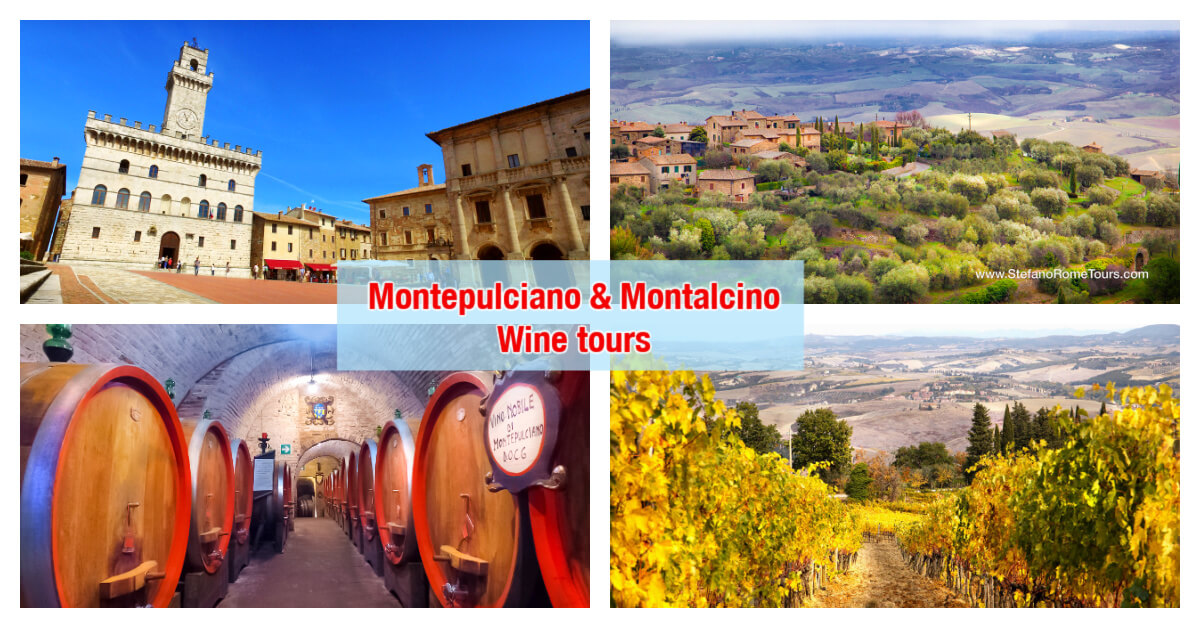
With the onset of the grape harvest season in autumn, you can take a wine tour from Rome to these enchanting destinations and their neighboring wineries. Stroll through picturesque vineyards, learn about the traditional winemaking techniques, and delight in delectable Tuscan cuisine at local osterias. The countryside is alive with the spirit of the harvest, making this experience both educational and delightful for wine enthusiasts and connoisseurs alike.
Umbria's Orvieto and its Winemaking Secrets
In the neighboring region of Umbria, you'll find Orvieto, a captivating town perched on a hill overlooking the picturesque Umbrian landscape. Orvieto is known for its winemaking heritage, and you can complement your wine tour with a visit to local wineries. Discover the secrets behind the production of Orvieto Classico and other regional wines.
Book an Orvieto wine tour from Rome or a Wine Tasting Shore Excursion from Civitavecchia and immerse yourself in the rich history and flavors of Umbria as you explore its vine-covered hills and rolling countryside.
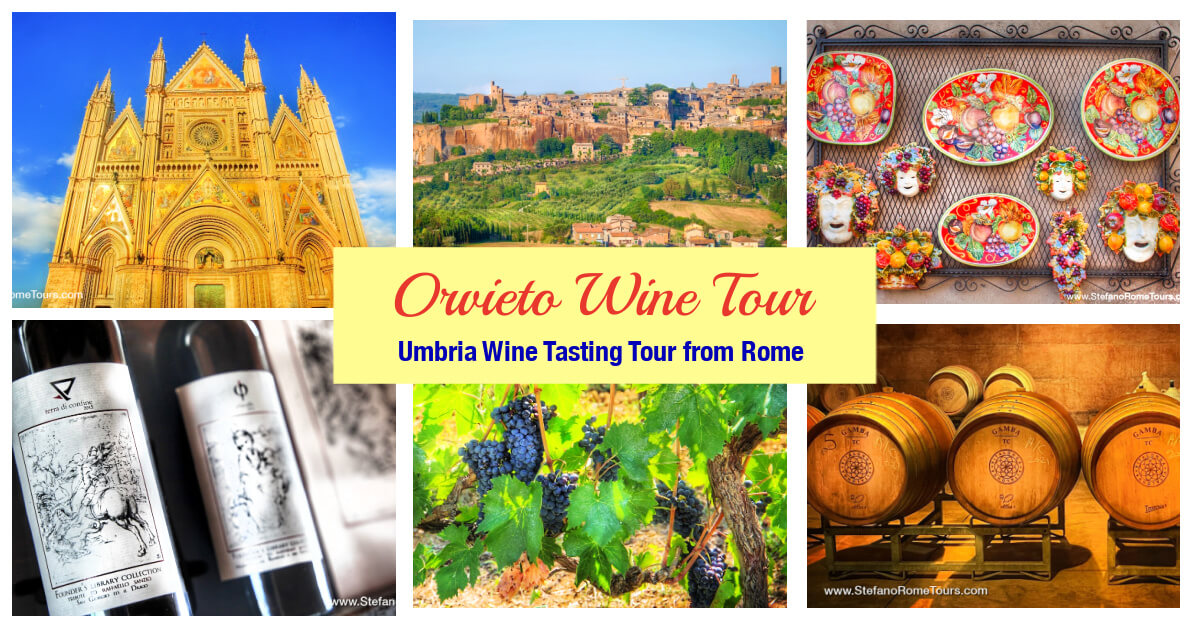
Cruisers can also enjoy wine tours from Civitavecchia when cruising in the fall and docking at Rome's cruise port for an excursion or staying in Rome pre-cruise or post-cruise from Civitavecchia.
An autumn day trip from Rome to Umbria or Tuscany provides an authentic and immersive experience in one of Italy's most renowned wine regions, allowing you to savor the flavors and traditions of the season while surrounded by the breathtaking Tuscan landscape.
-
CONS of visiting Rome in the Autumn/Fall:
Variable Weather in the Autumn in Italy
While the weather in autumn is generally mild and pleasant, it can be somewhat unpredictable. Rome's autumn months from late September onward may bring occasional rain, showers, and overcast days, so packing an umbrella and a light jacket is advisable. Weather variations can be noticeable from one day to the next, making it important to check the forecast and plan your activities accordingly.
Shorter Days in the Autumn
Another consideration for travelers in autumn is the gradual reduction in daylight hours. As the days grow shorter, you'll have less daylight for sightseeing and exploration. This means you may need to plan your activities and sightseeing tours earlier in the day or take advantage of the enchanting cityscape under the evening lights.
Early fall Rome can still be crowded with travelers and cruisers
Early fall in Rome is a delightful shoulder season, transitioning from the peak summer months to a more tranquil autumn. While it brings warmth and pleasant weather, it's essential to be aware that early fall in Rome, while less crowded than the peak of summer, can still be relatively busy. The city remains a popular destination, and the reduction in crowds is gradual.
Early fall also coincides with Italy's wine harvest season, attracting wine enthusiasts and travelers to the country's renowned vineyards. While Rome itself is not a primary wine region, the appeal of the wine harvest often prompts travelers to include Rome in their Italian itineraries. This can contribute to the crowd levels and the overall lively ambiance.
Additionally, the allure of early fall weather and events means that prices for accommodations, dining, and even tours may not yet have significantly dropped from their summer highs. Therefore, while early fall offers an appealing climate and a more relaxed atmosphere, it's advisable to book accommodations and activities in advance and budget for expenses that align with the popularity of the season.
Winter in Rome (December to February)
Winter in Rome is ideal for travelers who seek a unique and enchanting experience amidst holiday celebrations and the city's historic sites. The combination of lower prices and fewer tourists provides a distinctive opportunity to explore Rome at a leisurely pace and fully immerse yourself in its rich culture and history. Just remember to bundle up and plan for shorter daylight hours to make the most of your winter visit to the Eternal City.
In addition to the above, it's worth mentioning that February, while still part of the winter season, may see a bit more activity and tourists arriving for Valentine's Day. However, compared to other seasons, it remains relatively tranquil.
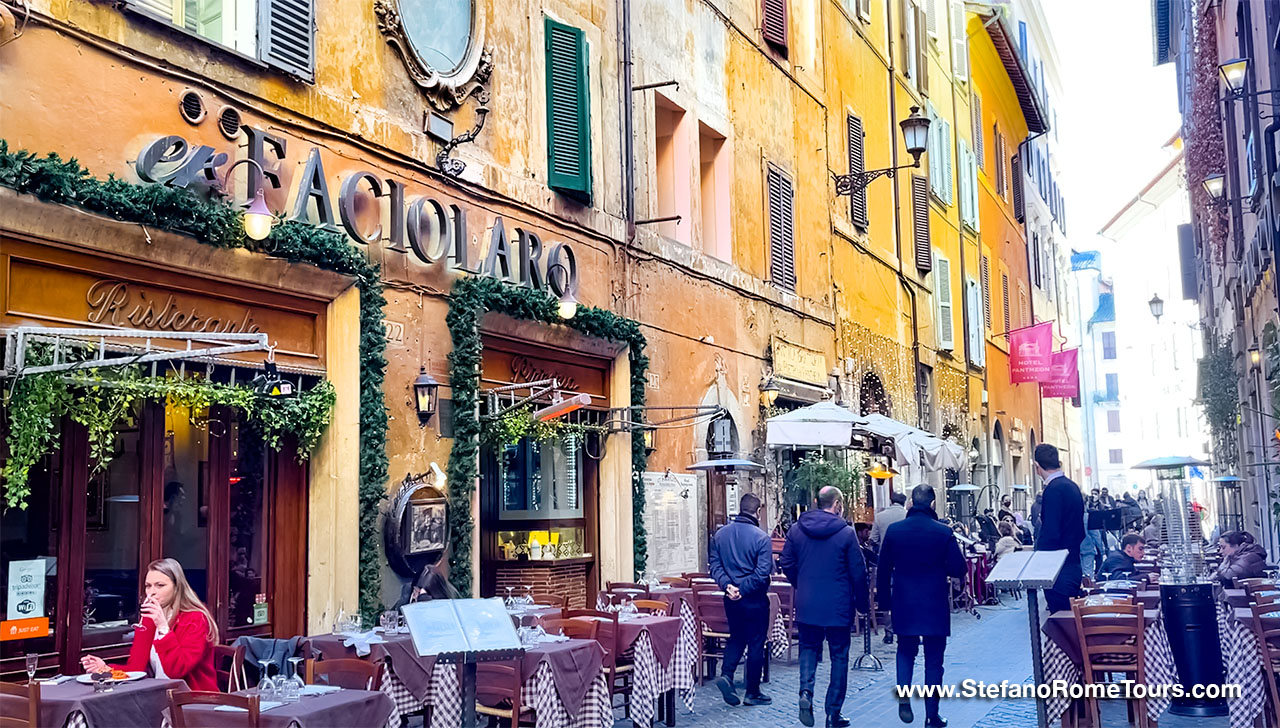
-
Pros of winter travel to Rome
Festive Atmosphere in Rome during winter holidays:
Rome in winter transforms into a wonderland of festive decorations and holiday cheer. The city's historic streets, piazzas, and landmarks are adorned with twinkling lights, Christmas trees, and nativity scenes. The atmosphere is truly enchanting, and you'll find numerous Christmas markets selling handmade crafts, seasonal treats, and unique gifts. You can also experience special holiday events and concerts in iconic venues like St. Peter's Square.
In addition to the above, it's worth mentioning that February, while still part of the winter season, may see a bit more activity and tourists arriving for Valentine's Day. However, compared to other seasons, it remains relatively tranquil.
Winter in Rome: Best Timing for Fewest Crowds and Best Rates
For those who prefer the quietude of winter without the holiday rush, the optimal timing is to plan your visit after the January holidays. From mid-January until the end of February, Rome experiences a significant drop in tourist numbers. The combination of less crowded streets and more budget-friendly accommodation rates makes this period one of the best times to explore the city at your own pace and at a lower cost.
During this late winter period, Rome settles into its serene winter ambiance, offering travelers a unique opportunity to delve deep into the city's treasures without the typical crowds. It's a time when you can truly appreciate the majesty of the Eternal City in a more contemplative and personal way.
Winter after Christmas and New Year till the end of February is an economical time to visit Rome. Accommodation prices are notably reduced, and you can find attractive deals on hotels and vacation rentals. Flights to Rome are also often more affordable during this period.
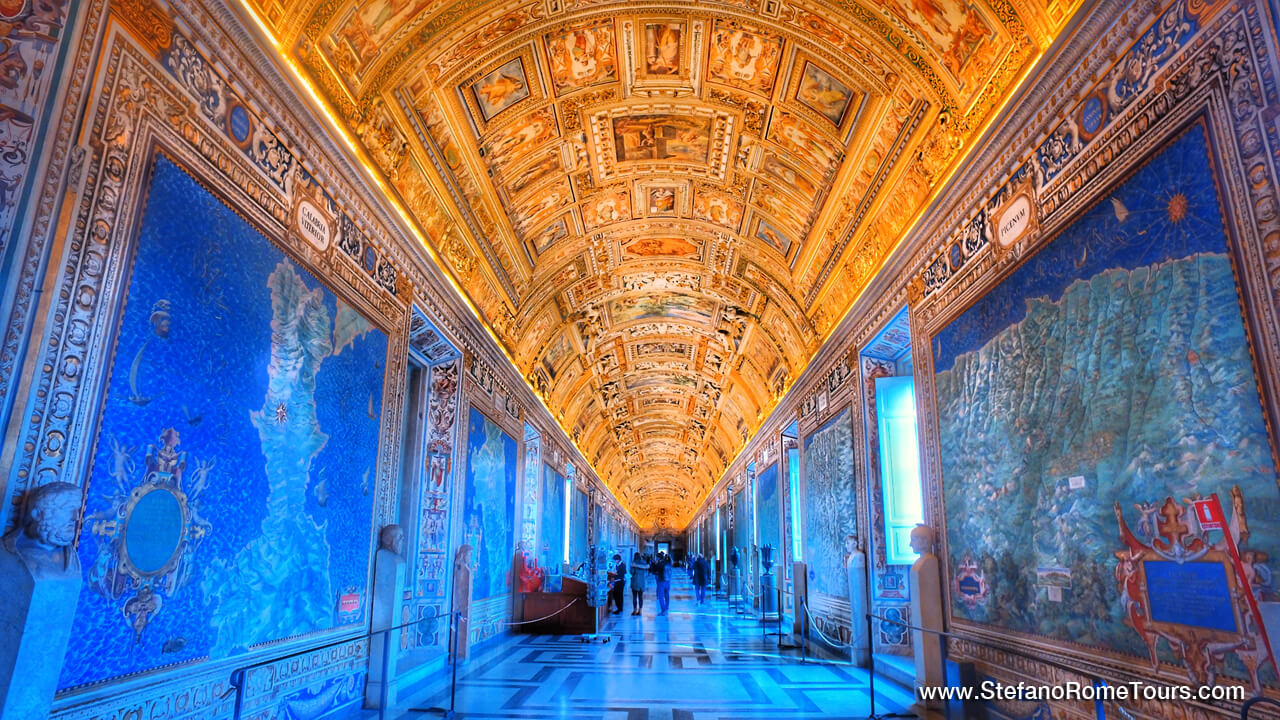
Christmas Holidays Consideration
However, it's important to be aware of a specific period when the tranquility of winter in Rome can be temporarily disrupted. The Christmas season, spanning from mid-December through early January, brings a surge in visitors.
Rome is beautifully adorned with holiday decorations, Christmas markets, festive events... and Living Nativity Scenes near Rome. The city's magical atmosphere during this time attracts travelers from around the world. As a result, prices at hotels may rise, and availability can be limited due to high demand. It's an enchanting time to visit, but it's essential to plan and book well in advance if you intend to experience Rome during the Christmas season.
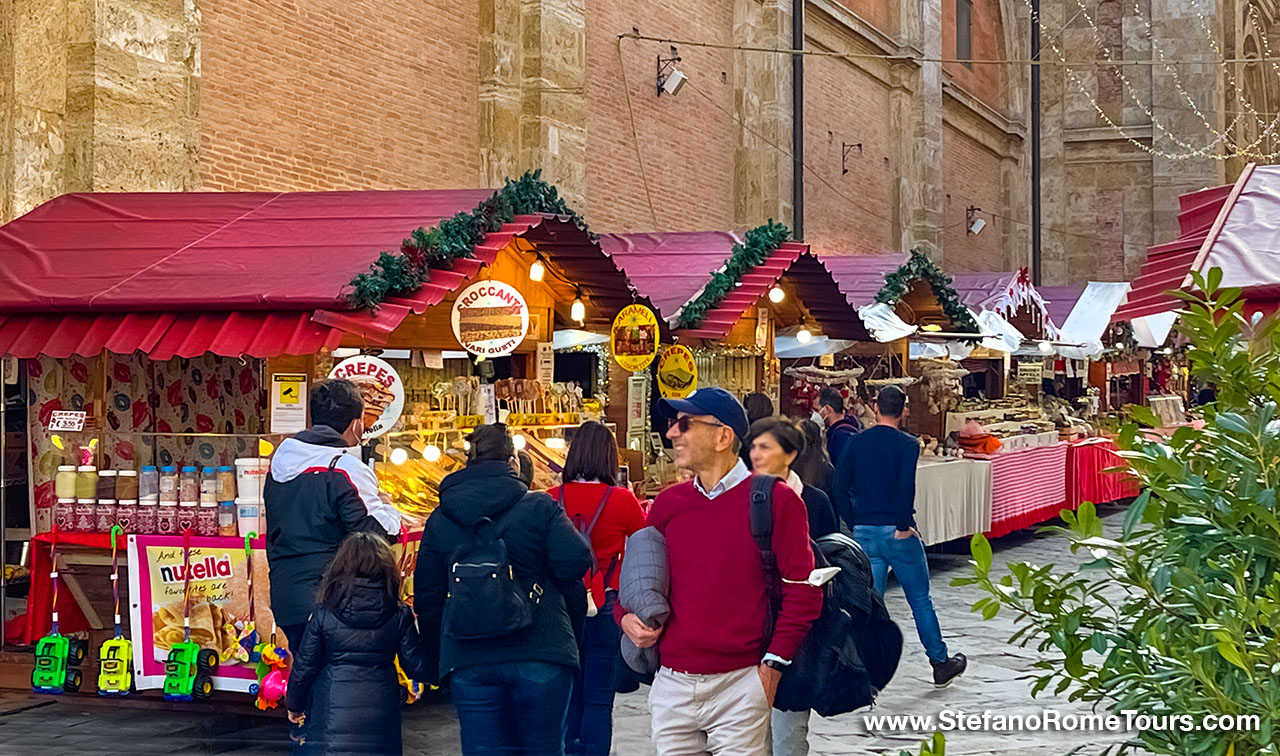
-
CONS of visiting Rome in the winter:
Colder Temperatures during winter in Rome:
Rome's winters can be quite chilly, especially during December and January. Daytime temperatures often hover between 8°C and 12°C (45°F to 55°F), while nighttime temperatures can drop even further. It's essential to pack warm clothing, including layers, scarves, and gloves to stay comfortable while exploring the city. Having the right clothing can make a significant difference in your overall experience.
Reduced Daylight in the winter - shorter days:
Another consideration for winter travelers is the shorter days. With the sun setting earlier in the afternoon, you'll have less daylight for sightseeing and exploration. Planning your itinerary to maximize daylight hours is essential, and it's wise to prioritize indoor attractions during the evenings, such as visiting churches, and museums, or enjoying a cozy dinner at a traditional Roman trattoria.
Winter in Rome is ideal for travelers who seek a unique and enchanting experience amidst holiday celebrations and the city's historic sites. The combination of lower prices and fewer tourists provides a distinctive opportunity to explore Rome at a leisurely pace and fully immerse yourself in its rich culture and history. Just remember to bundle up and plan for shorter daylight hours to make the most of your winter visit to the Eternal City.
With its rich history, delectable cuisine, and timeless charm, Rome is a city for all seasons. As you plan your Roman holiday, consider the characteristics and events of each season to choose the one that resonates most with your desires, ensuring that your journey to the Eternal City is nothing short of unforgettable.
The best time to visit Rome ultimately depends on your preferences, whether you seek pleasant weather, fewer crowds, or specific cultural events. Spring is a blossoming wonderland with cultural vibrancy, summer beckons with its warm embrace, autumn captivates with its rich landscapes and wine harvests, and winter offers a peaceful intimacy.
Regardless of when you visit, Rome's timeless magic and history will leave an indelible mark on your heart, ensuring a memorable experience in this captivating city. Rome is ready to embrace you in every season; the choice is yours.
Thank you for reading our travel blog and for choosing Stefano Rome Tours for your private tours in Italy!
